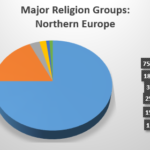Exploring Spiritual Paths: Religions and Traditions That Use Crystals and Astrology

Introduction
Throughout history, crystals and astrology have captured the human imagination as tools for spiritual insight, healing, and personal growth. While some religious traditions incorporate these elements deeply into their rituals and beliefs, others approach them with caution or outright skepticism. This article provides a comprehensive overview of the religious and spiritual systems that use crystals and astrology, exploring their origins, practices, and how you can engage with these traditions safely and respectfully.
Crystals and Religion: Ancient Roots and Modern Practices
Crystals have been revered by various cultures for thousands of years. Their use spans from ancient ceremonial objects to modern wellness tools. Among the earliest documented uses are in
Hinduism
and
Buddhism
, where crystals carry planetary and spiritual symbolism. For example, in Hindu tradition, gems correspond to different planets, and certain stones are believed to influence destiny or health. Buddhist practices also incorporate crystals, such as
amethyst
in prayer beads for enhancing meditation and devotion
[1]
.
By contrast, many Western religious practices-such as Christianity and Judaism-reference crystals primarily as decorative or symbolic elements. The High Priest’s breastplate in the Hebrew Bible, for example, is described as containing twelve stones representing the tribes of Israel [2] . While these stones held meaning, their use was not directly linked to the mystical or healing properties attributed to crystals today.
Astrology in Religious and Spiritual Contexts
Astrology -the study of celestial bodies and their influence on human affairs-has historical roots in many ancient cultures. In India, astrological principles (Jyotish) are deeply embedded in Hindu religious life, often guiding major life events such as marriages and rituals. Astrology also influenced early Greek, Roman, and Middle Eastern spiritual traditions, though its role varies widely by culture [3] .

Source: depositphotos.com
Many indigenous traditions connect star knowledge with spiritual guidance. For example, Native American and Australian Aboriginal cultures use the stars to inform agricultural cycles, ceremonies, and personal journeys [2] . In these contexts, astrology is often not a separate system but part of a holistic worldview that sees humans as deeply connected to the cosmos.
New Age Spirituality: Embracing Crystals and Astrology
The most prominent modern movement that combines both crystals and astrology is New Age spirituality . Emerging in the late 20th century, this syncretic belief system draws from Hinduism, Buddhism, Western esotericism, indigenous traditions, and psychology. New Age practitioners commonly use crystals like amethyst, rose quartz, and citrine for healing, meditation, and energy work. Astrology is used for self-understanding and life guidance, often in tandem with crystal practices such as planetary meditations and chakra balancing [2] .
Unlike traditional religions with structured doctrines, New Age spirituality is highly individualized. Practitioners may select practices that resonate personally, blending elements from various sources. This makes the movement accessible but also means that practices can vary significantly from one person to another.
Indigenous Traditions: Crystals and Celestial Wisdom
Many indigenous religions and spiritual systems around the world integrate crystals and astrology in unique ways. Native American tribes, for instance, use stones like turquoise for protection and spiritual communication. Australian Aboriginal cultures view certain crystals as “power stones” for shamanic practices. African traditional religions also employ minerals and stones in rituals and healing [2] .
Star knowledge is sacred in these traditions. The Maya, Lakota, and many others observed celestial events as guides for ceremonies and agricultural cycles. In these contexts, both crystals and astrology are seen as living parts of a dynamic, interconnected universe. They are not just tools but allies in spiritual and communal life.
Historical and Complementary Practices
Various ancient civilizations-Sumerians, Egyptians, Greeks, and Romans-used crystals for protection, healing, and ritual. In Asia, jade was prized for spiritual and physical well-being, while Greeks wore amethyst to avoid drunkenness. During the Middle Ages, crystal healing was common as a complementary therapy, though it fell out of favor with the rise of scientific skepticism [4] .
Today, crystal healing persists mainly within New Age and alternative wellness circles and is generally regarded as a complementary, rather than mainstream, practice. Scientific evidence supporting crystal healing is limited, and most authorities recommend that it be used in conjunction with-not as a substitute for-conventional medicine.
Practical Guidance: Exploring Crystals and Astrology in Your Spiritual Journey
If you are interested in incorporating crystals or astrology into your spiritual practice, here are actionable steps you can take:

Source: animalia-life.club
- Identify Your Intentions: Clarify why you want to use crystals or astrology. Are you seeking healing, guidance, or spiritual connection? Defining your purpose will help you choose the most relevant practices.
- Research Traditions: Study the history and cultural context of these practices. If you are drawn to Hindu or Buddhist uses of crystals, explore their texts and teachings. For New Age practices, look for reputable authors or teachers with a background in comparative religion.
- Choose Ethically Sourced Crystals: The mining and trade of crystals can have significant environmental and ethical impacts. Seek out vendors who provide information about sourcing and sustainability. You can find guidance on ethical shopping through environmental blogs and consumer advocacy organizations.
- Learn Basic Astrology: If interested in astrology, start by learning about your sun, moon, and rising signs. Many public libraries and online resources offer introductory guides. Always look for sources that cite traditional texts or established astrologers.
- Consult Practitioners Carefully: If you wish to work with a crystal healer or astrologer, research their credentials and experience. Ask for references or read reviews from previous clients. Avoid practitioners who make unrealistic promises or require significant financial commitments upfront.
- Integrate Mindfully: Remember that these practices are complementary. They can provide insight and comfort, but should not replace professional medical, psychological, or spiritual guidance when necessary.
Potential Challenges and Solutions
As with any spiritual or wellness practice, there are potential challenges:
- Scientific Skepticism: Most scientific studies do not find evidence for the efficacy of crystal healing or astrology. Use them as adjuncts to, not replacements for, evidence-based practices.
- Cultural Respect: Many crystal and astrological traditions belong to specific cultures. Approach these practices with respect, seek permission when appropriate, and avoid cultural appropriation by learning directly from tradition bearers.
- Ethical Concerns: Be mindful of the environmental and labor impacts of crystal mining. Choose sustainable and fair trade sources whenever possible.
Alternative Approaches and Pathways
If you are seeking spiritual fulfillment but feel unsure about crystals or astrology, consider these alternatives:
- Meditation and Mindfulness: These practices offer proven benefits for mental and spiritual well-being and are accessible to people of all backgrounds.
- Nature-Based Ritual: Many find connection and healing through time in nature, without the need for specific objects or systems.
- Community and Study: Joining a study group or attending workshops on comparative religion can help you explore a wide range of spiritual paths safely and respectfully.
How to Begin Your Exploration
You can begin by visiting your local bookstore or library to find resources on the history of crystals and astrology in religion. Look for reputable publications or websites run by established environmental, religious, or academic organizations. If seeking a practitioner, consider searching for certified members of recognized professional associations. For more information on ethical sourcing, consult consumer advocacy groups or environmental organizations.
Key Takeaways
- Crystals and astrology are used in diverse religious and spiritual contexts, especially in Hinduism, Buddhism, indigenous traditions, and New Age spirituality.
- New Age spirituality most visibly combines both, emphasizing personal growth and holistic healing.
- Engage with these practices mindfully, ethically, and with respect for their cultural origins.
- Scientific consensus does not support the efficacy of crystal healing or astrology, so use them as complementary tools.
- Always seek out reputable sources and practitioners, and prioritize ethical sourcing and cultural respect.






